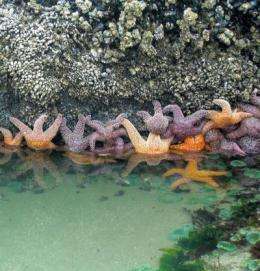The bivalve effect

McGill biologist Dr. Frederic Guichard says marine life can communicate over thousands of kilometers, calling into question current fishery management and marine preservation practices. "If I kill mussels in San Diego, it will have an impact in Seattle. We now know that populations are connected," he said.
Explaining and understanding life cycles is on many people's minds in spring, and McGill Biologist Dr. Frédéric Guichard is no exception - in fact, he's made a fascinating discovery relating to the life, death, reproduction and communication... of mussels. Guichard says marine life can communicate over thousands of kilometres, calling into question current fishery management and marine preservation practices. "If I kill mussels in San Diego, it will have an impact in Seattle. We now know that populations are connected," he said.
Using mathematical modeling and data from natural populations, Guichard and his colleagues, Dr. Tarik Gouhier and Dr. Bruce A. Menge at Oregon State University, found a phenomenon similar to the "butterfly effect," whereby the actions of one individual can cause a series of chain reactions. Mussel populations communicate by actions such as releasing larvae or dying. "Current practices are based on the knowledge that a mussel can travel no further than 100 km in its lifespan, so efforts are focused on local areas in the belief that we can control local populations," Guichard explains. "But this 'fence approach' only looks at the life history of an animal, which isn't enough to predict how it will affect its environment and other marine life.
"We can now see what we normally don't look for in the wild, so we can use this model to better manage their numbers. Scientists have long theorized about this, but this is the proof," Guichard said.
The principles of their discovery should be applicable to many species and will have important ramifications in the short term for the design of marine reserves and in the longer term for fisheries management. Frédéric Guichard was funded by the James McDonnell Foundation and the research was published in the Proceedings of the National Academy of Sciences.
Provided by McGill University















